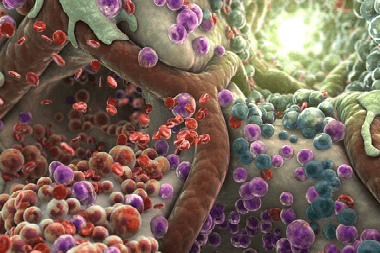General microbiology - viruses, bacteria, fungi >>>> Endogenous infection - why is it dangerous?
Endogenous infection - why is it dangerous?

When a person's immune system is weakened, there is a threat of the spread of harmful microbes from a small focus of infection throughout the body. This infection is called endogenous.
Ways of spreading endogenous infection: blood and lymphatic channels. Blood and lymph, washing absolutely all internal organs, organ systems and tissues, are capable of transferring infectious agents to any corner of the human body in a very short period of time.
The source of endogenous infection may at first glance be the most insignificant (carious tooth, abscess), or it may exist as an inflammatory process within the framework of a disease. Conditionally pathogenic microorganisms living as saprophytes in the human body are always a potential source of endogenous infection.
Since an endogenous infection is an internal infection, the methods of combating this kind of infection involve the impact on pathogenic microbes with the help of the internal reserves of the body - "spurring" immune responses with the help of immunostimulants. The second stage of the fight against endogenous infection is the identification of strains of pathogenic microbes and the conduct of drug antimicrobial therapy. In addition to a large-scale fight against spreading pathogenic microorganisms, they affect the primary foci of infection (they treat the underlying disease, extinguish the source of infection).
It happens that a small lesion is the beginning for a generalized infection in the body (for example, sepsis), then surgery, blood transfusion, hemosorption are required.

Read

Read



























